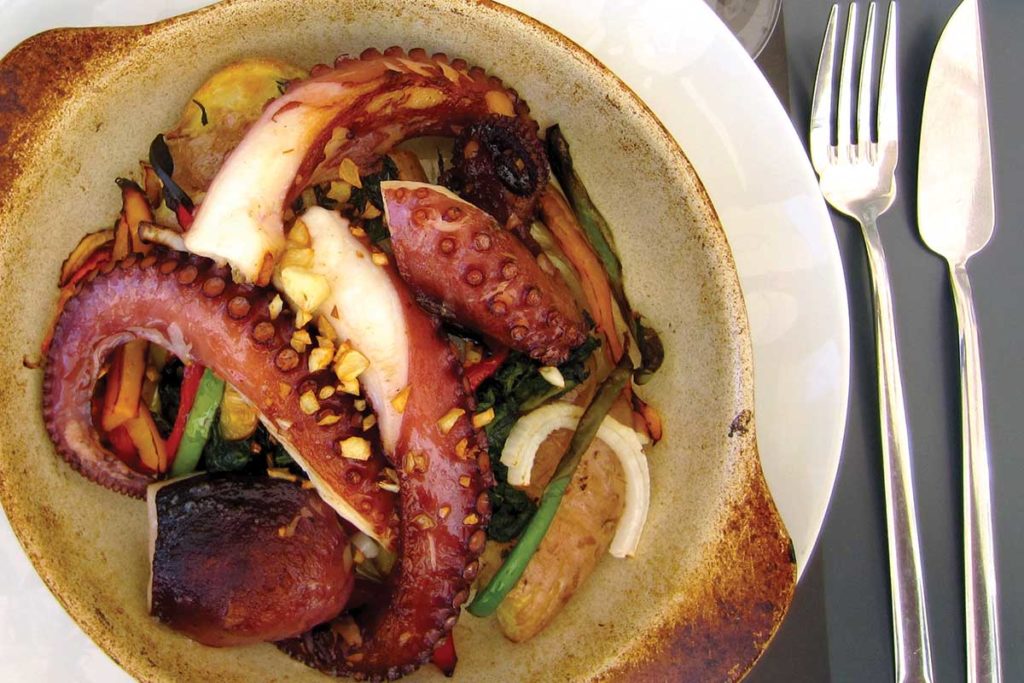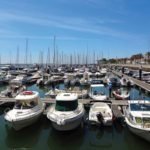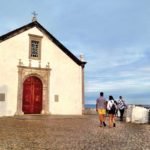 Portugal’s beach-filled southern coastline has long been considered the country’s summer playground. And while the west side has enjoyed the lion’s share of the tourist trade since the 1970s, the east side, stretching from the central city of Faro to the Spanish border, is far more relaxing and infinitely more cool.
Portugal’s beach-filled southern coastline has long been considered the country’s summer playground. And while the west side has enjoyed the lion’s share of the tourist trade since the 1970s, the east side, stretching from the central city of Faro to the Spanish border, is far more relaxing and infinitely more cool.
This is where the smarter Europeans are buying (and renting out) their summer properties, and where hip expats are opening boutique hotels and hot restaurants. The sleepiness of the tiny towns and empty beaches weeds out the people who can’t sit in a chair for more than 10 minutes. The common denominator here, for both locals and tourists, is an innate ability to appreciate life.
It’s easy to see why. Secluded beaches can stretch for many kilometres with no one in sight. Centuries-old towns – with their winding narrow walkways, whitewashed markets and village square cafés – are beyond quaint. Exquisite mosaic tile work is everywhere you look. Ditto ice cream shops. Traditional salt-cod fritters, octopus salad, seafood rice and the freshest bread are plentiful, tasty and inexpensive. Each bakery has its own unique recipe for the ubiquitous pastel de nata, or egg tart, which makes repeat taste-tests essential. And the wine is not only sublime, it can be had for as little as €2 a glass. Clearly, these people know how to live.
The hub city of Faro separates the Eastern and Western Algarve. Travellers fly into its small but busy international airport – and then promptly leave town. As a result, Faro’s pretty spots seldom make it into the guidebooks. There’s a lot of history here, and a visit to the Arco da Vila Interpretation Centre, built within one of the city’s oldest Moorish gates dating from the 11th century, provides visitors with the basics. This national monument also fully documents the devastating 1755 earthquake and its aftermath, and the rebuilding of the city.
From there, you can pop into nearby Faro Cathedral, but perhaps more intriguing is the Church of Nossa Senhora do Carmo. [Note: This is the correct name of the gilded church. The website you list (http://www.algarve-tourist.com/Faro/Cepela-dos-Ossos-faro.html) features the wee chapel with the skulls in the back of the big church. I have left that name out, because do Carmo is the main building, ten times bigger than the scull chapel. The chapel is just an outbuilding attached to the back end.] It is noteworthy for its remarkable gilded interior and for the chilling chapel in the rear, its walls and ceilings lined with the skulls and bones of more than 1,000 monks who once served there.
The town of Olhao, just a 20-minute drive east, is the hip part of the region, more of a suburb really, and technically a municipality. This busy fishing port has slowly been adopted by artists and creative people over the years, drawn to its no-nonsense grittiness, and to the mix of old and new. Boutique hotel developments mingle with mom-and-pop restaurants on intricately tiled pedestrian streets. Huge white storks from the nearby salt marshes nest on the tops of church towers; great big lumbering things, like something out of The Flintstones.
 Here, as you’ll find throughout the Algarve, smart renovated buildings border total derelict properties, either abandoned or waiting for some long-lost cousin to reclaim them. This juxtaposition creates a sort of romantic, tumbledown-chic that underscores Olhao’s history, linking past to present.
Here, as you’ll find throughout the Algarve, smart renovated buildings border total derelict properties, either abandoned or waiting for some long-lost cousin to reclaim them. This juxtaposition creates a sort of romantic, tumbledown-chic that underscores Olhao’s history, linking past to present.
A short ferry ride from Olhao to the marshes directly south of town will land you at Culatra Island, the first of the beachy sandbar islands that stretch eastward, all the way to the Spanish border and beyond. Once you get hooked on these incredible beaches, you’ll need a daily fix, and there is ample opportunity to beach hop to a different one every day. Take a 15-minute drive a little further up the coast for a stop at Barril Beach on Tavira Island. It’s a former tuna fishermen’s camp, reached by walking from the mainland across a pontoon bridge, then hopping on a small train that wends its way through marshland and sand dunes to the Atlantic.
You will have no problem finding solitude here: This beach is 11 kilometres long. A cluster of bars and restaurants provides a bit of a respite from the surf and sun tanning, and a photogenic anchor graveyard commemorates the region’s fishing history.
Keep your camera ready for the city of Tavira itself, one of the Eastern Algarve’s prettiest spots and a popular home base for visitors. White stone-tiled streets, worn smooth by centuries of feet, line the narrow pathways, grand boulevards and picturesque church squares. Happily, it feels like there’s a gelato shop every 10 metres.
One of the many day trips to slot in while you’re in or around Tavira is the ancient Moorish fishing village of Cacela Velha just a few minutes further east. There’s a favourite local beach here where bathers walk or wade out to the sand bars, keeping an eye on the time so they don’t get stranded when the tide comes in. There are no public amenities on the beach but there are a couple of really good restaurants in the tiny town itself, including a fresh oyster café.
Keep in mind that throughout the Algarve, lunch is sacrosanct, and always served between 1 and 3. (Many of the smaller shops close during this time as well.) If you try and eat later or earlier, you will be met with a shrug.
By the time you reach the town of Vila Real de Santo Antonio, another worthwhile daytrip, you’re at the Guadiana River, with Spain on the other side. Built in less than six months in 1774 as a centre for tuna fishing, it is now filled with travellers, its streets lined with tranquil cafés and craft-filled markets. Steer clear of the fridge magnets and the beach towels sporting the mug of soccer star Cristiano Ronaldo, and stock up on local crafts instead. Cork home furnishings, ceramic bowls and tiles, terra cotta cookware, wool rugs and fine-milled soaps are all hand made and packable for the trip home.
And since your quest on this trip is learn how to fully appreciate the good life, when you tire of shopping in Vila Real de Santo Antonio, why not head into Spain for a bite? Just hop on the 20-minute ferry across the river to the town of Ayamonte for a tapas lunch and a jug of sangria. Note that there is a one-hour time difference here, and a similar outlook on respecting lunch times.
If golf is your game, tee off at the nearby Monte Rei Golf and Country Club just north of Vila Real, ranked earlier this year by Golf Digest magazine as the No. 1 course in the country. Designed by Jack Nicklaus, it blends into the landscape, with views of the Serra do Caldeirao mountains to the north and the ocean to the south.
Before heading back to your home base, take a quick detour into the tiny town of Castro Marim to wander through the 12th-century castle ruins. Chances are good you will be the only ones there. And as this is the centre of sea salt production in the Eastern Algarve, it’s fitting that there’s an open-air mud bath to wade into at the town’s edge. Nestled right in the salt pans, it’s more of a wallow than a bath, but a great chance to “take the waters.”
With all this salt and sand and sitting around, it’s easy to become exhausted doing absolutely nothing. This really is the finest way to appreciate life.









